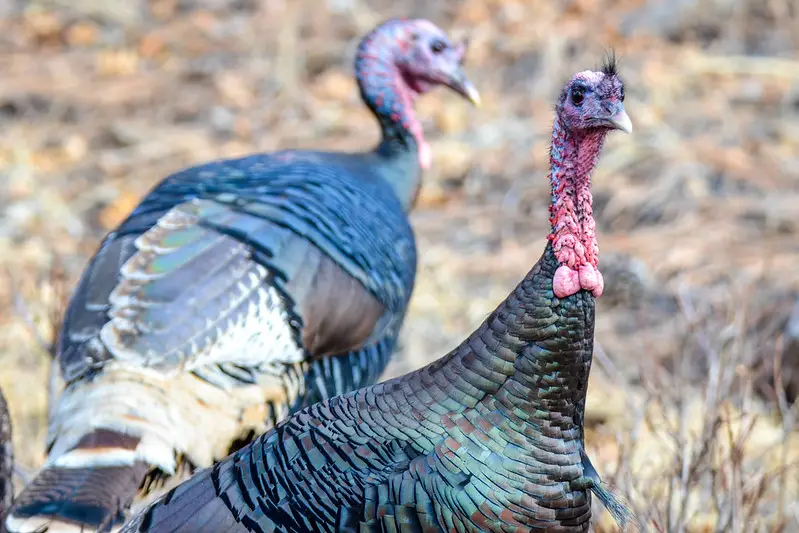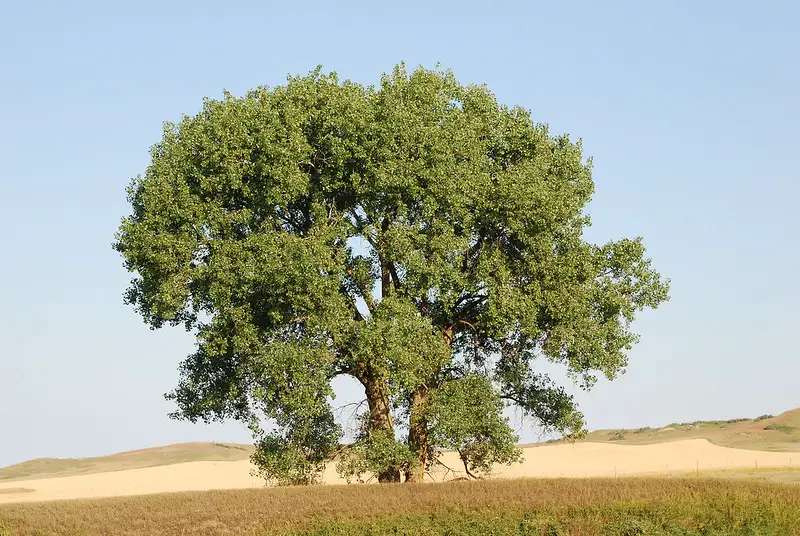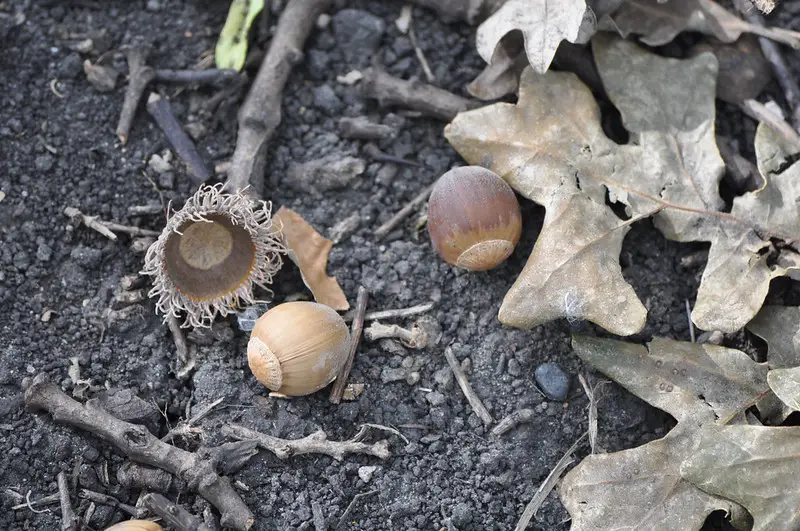
If you’ve ever been through walking through the woods and found leaves piled up and the ground scratched bare, you’ve likely seen what wild turkeys will do to find food. While not quite as destructive as feral hogs, turkeys will rival any armadillo when it comes to turning the place upside down in search of food. If you’re wondering what a turkey is looking for when he scratches, then read on as we cover what wild turkeys eat in depth.
In this article, we will talk about the natural food sources you can target to find turkeys as well as crops you can plant as food plots to draw turkeys to your land.
What Do Wild Turkeys Eat-Natural Food Sources
Turkeys are opportunistic omnivores. Try saying that five times fast.
Basically, that means that turkeys will eat any critters or plant matter that they can get their beaks on. What wild turkeys eat can vary a lot based on geography, seasons, and life cycle.
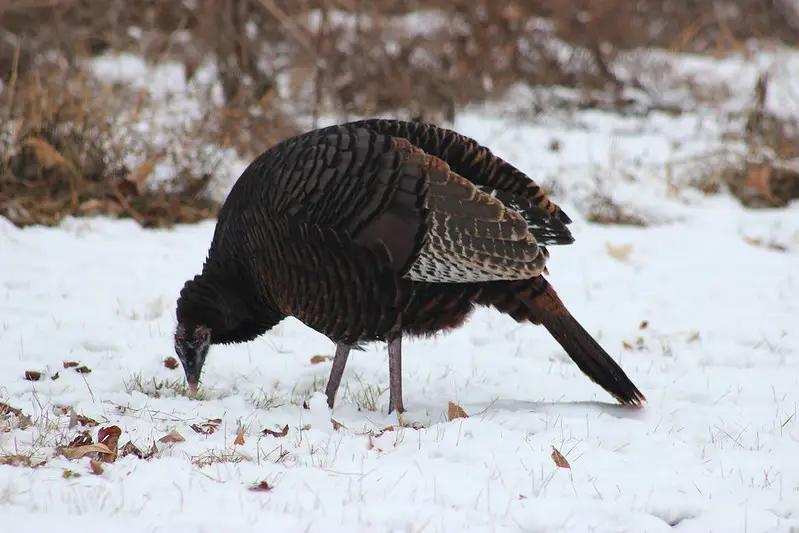
There are some occasions when turkeys will eat very little. Mating toms and nesting hens eat very little as they focus on reproduction. According to the Wisconsin Department of Natural resources, turkeys may stay in their roosting area for up to two weeks during severe weather periods. This article also states that a turkey can lose up to forty percent of its body weight without starving to death.
Most of the time, turkeys will eat throughout the day with their largest feedings coming in the opening hours of daylight and the closing hours before dark.
Here are some of the more common food items that turkeys eat.
Hard Mass
Acorns are a huge staple of the turkey diet during the fall and winter. Mature forests with large stands of red oaks will generally hold a good population of turkeys. They will also eat white oak, black oak, and even chestnut oak acorns.
It’s not just the oak acorns that draw in turkeys. Turkeys like beech nuts, hickory nuts, and pecans. Habitat with hard mass and water can make for great fall turkey hunting.
Fruits
During the summer and early fall, turkeys will eat all sorts of fruit including blackberries, persimmons, crabapples, wild grapes and cherries, and dogwood berries.
Grasses and Buds
Tender grass and other plant matter rank high on the turkey palette, especially during the spring. Once the fields start to turn green, look for turkeys out feeding in these fields.
Insects, Lizards, and Rodents
Turkeys eat grasshoppers, grubs, beetles, caterpillars, earthworms, lizards, snails, slugs, frogs, and even field mice. Poults eat a high percentage of animals and insects because the high protein levels help them with their rapid growth. As a turkey gets older it will still eat these things but it makes up a lesser percentage of its diet.
Grit
According to Nathan Boggs with the American Pastured Poultry Producers Association, “[domestic] turkeys can consume the equivalent of 1/5th their diet in grit.” Grit aids the turkey’s digestion by helping to break down all the many foods it eats throughout the day. Wild turkeys will eat sand, dirt, small rocks, and gravel which is stored in the gizzard.
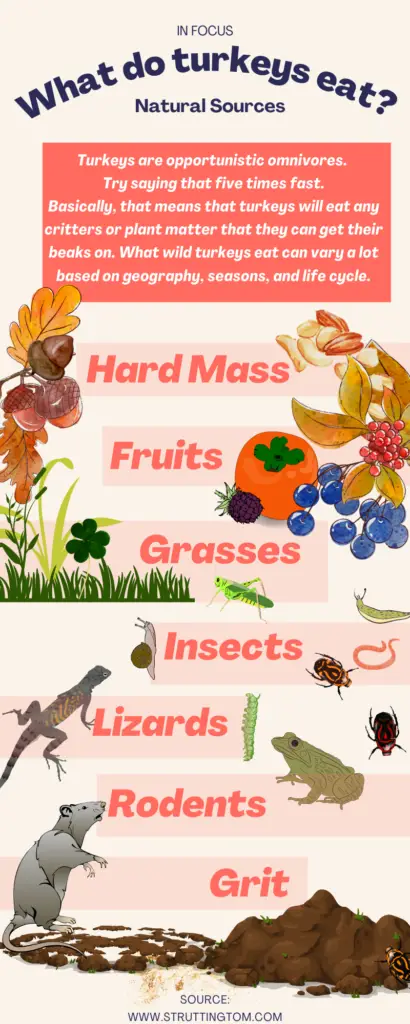
What Do Wild Turkeys Eat-Food Plots
Many people want to plant food plots to increase turkey sightings and hunting opportunities. However, there is not a ton of information about turkey-specific food plots. Let’s talk about what you can plant specifically to target turkeys.
Turkeys prefer small openings to eat. That does not mean they won’t utilize large fields as well though. Try planting along the edge of roads, small clearings near mature forests, old homesites, and the edges of water.
Before planting, you should always conduct a soil test to determine what you can successfully plant, how to fertilize, and if you need to add lime to your soil.
Chufa
Chufa has long been considered the gold standard of turkey food plots. Chufa is a sedge that produces underground tubers that turkeys will dig up. If you want to hunt near a chufa plot, you must plant it in late spring or early summer in order for it to mature by spring of the next year.
While chufa is an excellent attractant that can help draw turkeys to your land, it is not a perfect solution. There are several occasions when chufa will not be a good choice.
It is recommended to plant at least an acre of chufa because once the turkeys find it, they will eat it even before it reaches maturity. Feral hogs will tear up a food plot in short time. Don’t even bother planting chufa if you have a large population of feral hogs nearby.
Read your state regulations carefully to determine if chufa is legal to plant in your area as well as what horticultural practices are legal for hunting.
Clover
Clover is a great turkey food plot because it is fairly easy to establish, it is one of the first plants to green up in the spring, it provides quality nutrition, and it attracts insects and lizards. Additionally, it is fairly cheap when compared to chufa.
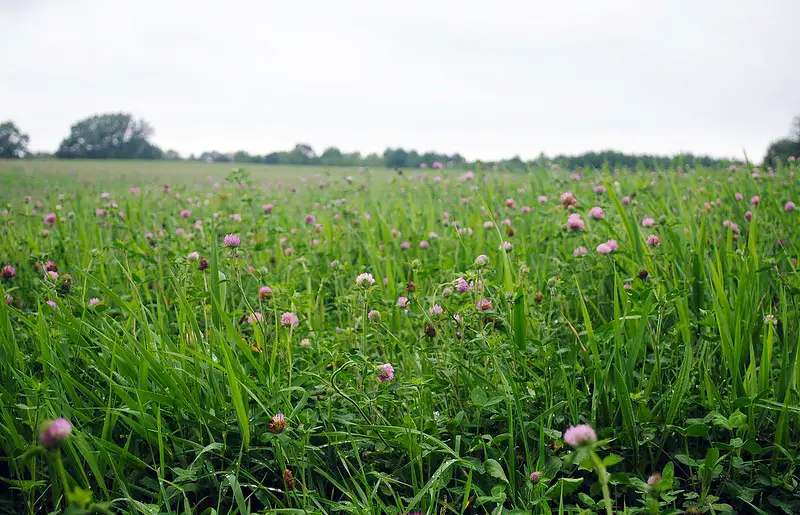
Planting clover in the fall makes it easier to keep it weed-free. By planting with a grain such as winter rye or wheat, you allow the grain to “protect” the clover from browsing before it can establish itself.
There are both perennial and annual varieties of clover. Choose a variety that suits your soil type and growing zone. If maintained properly, a perennial clover can provide several years of nutrition and attraction for turkeys.
Grains
Oat, wheat, and rye are turkey magnets. Turkeys will eat the plant itself as well as the seed once the plant matures and reproduces.
As mentioned above, grains will establish very quickly. You should plant them in the fall. They will go to seed in the spring. Keep in mind that oats will not do well in harsher winters whereas wheat and rye should be fine.
To attract turkeys in the late spring or early summer, consider planting millet in your field. Millet can be planted during the spring or summer. Like the other grains, turkeys will eat both the green chutes and the seed head of the plant.
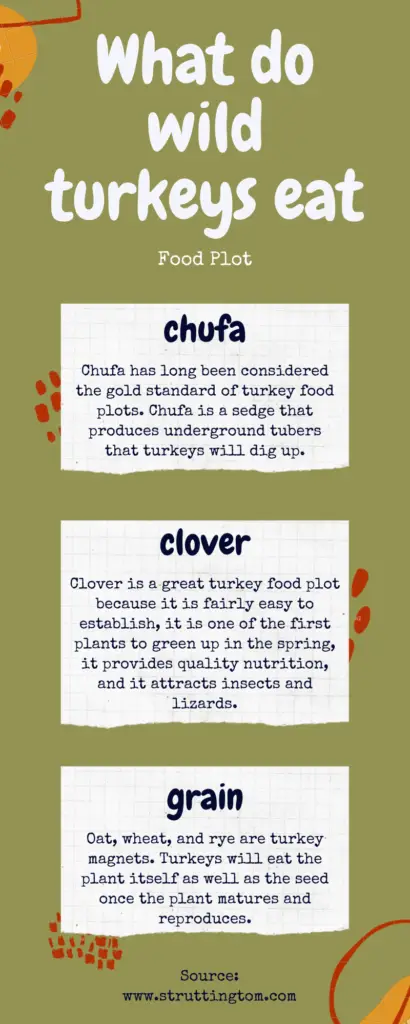
Conclusion
Hopefully, this article provided you with some ideas for either encouraging natural turkey food sources on your land, or for some high-draw crops to bring turkeys in for extended feedings. There is almost always something you can do to improve turkey habitat.
If you are a public land hunter, scout for food sources in proximity to water and roosting sites. Remember, half the battle of turkey hunting is getting in the right area. Locating these hot spots will give you a higher probability of putting one in the cooking pot.
What are your favorite food sources to target? What is the craziest thing you’ve seen a turkey eat?

